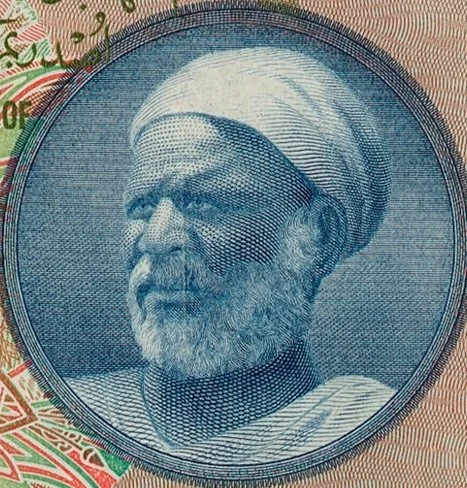Computer-Aided Design
I modeled a 2D credit card for my startup, Edris, which is potentially related to my final project. As part of this process, I creatively transformed a real Egyptian pound bill into an intricate engraving using Adobe Illustrator, which became the central design element for the Edris logo and the face of the card. Later on, the credit card design process included raster-based rendering for visualizing textures, vector graphics for clean geometric shapes, and simulations to explore card usability and interaction in both physical and digital forms.
The Background
Prior to his reign, Prince Fuad had no chance of becoming King of Egypt, due to two prominent family members being ahead of him in the line of succession. One day, Edris, a servant of the royal family, told Prince Fuad about his vivid dream that Fuad would become Egypt’s future king. Fuad laughed since he thought it would be impossible and promised Edris that if he were to become king, he’d put Edris’s face on the first Egyptian bank note instead of his. Life took its turns and Fuad became King of Egypt. During his reign, he fulfilled his promise to Edris. At the time, the Egyptian pound was stronger than the British Pound and US Dollar.
The story of Edris has been the main and founding inspiration of my startup, Edris, which is aimed at achieving the impossible to deflate the pound to what it used to be, one of the strongest currencies in the world. The cash-heavy based economy of Egypt has been harmful for the country’s financial well-being, Edris approaches the economy differently, with a mentality that has been long awaited but hasn’t happened before: implementing a cashless economy, one that will require cards for everybody.
I decided to design the card.
The Works
The design of the Edris credit card drew inspiration from the American Express card, particularly its distinctive and unique visual identity. The engraved element of the centurion on the Amex card served as a key influence, inspiring the use of an intricate engraving of the Egyptian pound bill for the Edris logo and card face to evoke a similar sense of prestige and heritage.
The Creation of an Identity
The creation of the Edris logo, from the Egyptian banknote to the finished digital engraving:
Step 1: Original image is extracted from an Egyptian pound banknote.
Step 2: Image is cleaned up and refined by adjusting color tones.
Step 3: Key sections of the portrait are highlighted using color segmentation to isolate important details for engraving.
Step 4: The image is vectorized in Adobe Illustrator, focusing on the key details of the portrait for precise engraving.
Step 5: The vectorized design is cleaned further, with detail refinement applied to capture engraving style.
Step 6: Final adjustments are made, including border design and alignment, resulting in a complete digital engraving.
Making the Card
The design process followed the elements of the Amex card, incorporating three key features: a distinct background pattern, a bold border surrounding the card, and the engraved Edris face prominently featured in the center. Each Edris card type or tier has its own unique background design, adding a layer of distinction and exclusivity to every card issued. This approach ensures that every cardholder experiences a personalized touch, while maintaining the cohesive and refined aesthetic of the Edris brand. As the creation of the Edris face has already been discussed, this section will discuss the creation of the background on one of the cards, the standard Purple card.
The Background
The background designs were inspired by elements from the Kuwaiti Dinar, the strongest currency in the world, playing into Edris’s theme of strength and value. I grew up in Kuwait, I witnessed my people working hard in harsh conditions to build Kuwait. These designs are an easter egg feature, but mainly paying homage to my people and serves as a tribute to their unnoticed efforts, blending cultural pride with the premium identity of Edris.
The creation in the Purple Card comes from the old Kuwaiti 1/2 Dinar (during the era I lived there they used the “We Seek God’s Assistance” edition) to a pattern background.
Step 1: Extract design elements from the Kuwaiti Dinar, focusing on geometric patterns and detailed engravings. > Step 2: Highlight specific pattern sections, such as those around the word "Dinar" and "Assistance of Kuwait," for use in the card design. > Step 3: Digitally recreate the selected patterns and clean up the design for vectorization. > Step 4: Generate a repeating background pattern from the extracted elements, adjusting proportions and spacing for balance. > Step 5: Finalize the pattern design by tweaking tile configurations in Illustrator to ensure seamless repetition and alignment. > Step 6: Apply the digital pattern to the Edris card background, ensuring variations are used for different card tiers.
The Final Product
The final Edris card design was meticulously refined, starting with the addition of a bold border to frame the card, creating a balanced aesthetic. A vectorized version of the Egyptian coat of arms was incorporated for a national touch, alongside a custom-designed written logo that harmonized with the overall theme. A PNG image of a standard credit card chip was added to complete the card's visual elements. The design was then printed onto a stock plastic card, and a dummy chip was inserted to simulate a functional credit card. This process involved perfecting both the digital design and physical production, ensuring that every detail—from the engraved face to the background pattern—aligned with the brand’s vision. The finalized dummy card stands as a tangible representation of Edris's fusion of heritage and modernity, symbolizing the project's successful journey from concept to creation.























